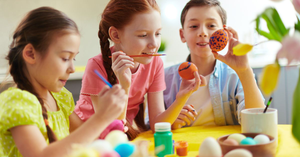When we think about raising eco-conscious kids, we must think beyond teaching them to turn off lights or recycle plastic. It’s about nurturing a generation that understands the delicate balance of our planet and their role in protecting it. Believe it or not, their wardrobe can be a great place to start!
The fashion industry comes with a notable environmental footprint. From water usage in cotton production to chemical dyes and textile waste, the impact can be alarming. But here’s the good news: dressing your kids sustainably doesn’t have to be expensive or complicated. It’s about making conscious choices and building habits that benefit both your child and the environment.
Why Does Eco-Conscious Clothing Matter?
Think of your child’s favorite t-shirt. The story behind it goes far beyond the checkout counter. Conventional cotton production uses a staggering amount of water and harmful pesticides. Synthetic materials often rely on fossil fuels and can take centuries to decompose in landfills. By choosing eco-friendly options, we’re not just dressing our kids; we’re making a positive statement about the future we want for them.
Building Eco-Habits, One Outfit at a Time
Change can feel daunting, but even small steps can make a big difference. Here are some simple ways to introduce sustainable clothing choices into your child’s life:
- Embrace Natural Fabrics: Opt for organic cotton, bamboo, or hemp. These materials are grown with less water and harsh chemicals, which is kinder to the planet and your child’s skin.
- The Power of Pre-Loved: Second-hand stores and online marketplaces are treasure troves for unique and affordable finds. Shopping preloved extends the lifespan of clothing, reducing textile waste. It’s beneficial for both your wallet and the environment!
- Quality Over Quantity: Invest in well-made, durable pieces that withstand frequent wear and tear. Think classic styles and versatile items that can be mixed & matched to create new outfits.
- The Art of Clothing Swaps: Organize clothing swaps with friends or within your community. It’s a fun way for kids to refresh their wardrobes while giving pre-loved clothes a new lease on life.
- Get Crafty: Does your child have a beloved shirt with a small tear? Instead of tossing it, consider getting crafty! Patching, embroidery, or even a cool trimming can bring new life to a favorite piece.
Making it Fun and Engaging
Teaching kids about sustainability shouldn’t feel like a chore. Here are some ways to make it a positive and engaging experience:
- Story Time with a Twist: Read children’s books exploring environmental protection or upcycling themes. Turn the story into a conversation about the clothes the children wear and how they can make a difference.
- DIY Projects: Get creative with fabric scraps! Together, you can design tote bags, headbands, or even pillowcases, giving new life to leftover materials.
- “Eco-Fashion Show”: Have your child pick their favorite eco-friendly outfit and organize a fun “Eco-Fashion Show” at home. Let them strike a pose and talk about why they love their sustainable clothes.
Conclusion
Sometimes, grabbing the first thing off the rack is more manageable. Don’t be discouraged! Celebrate every eco-conscious choice, no matter how small. By making small changes together, we can empower our children to become eco-warriors, one outfit at a time. Imagine the impact if every child embraced sustainable clothing – it could be a fashion revolution for our planet!








Be the first one to comment on this story.